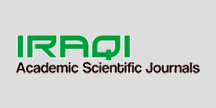Systemic Functional Linguistics as Approach to Translation
DOI:
https://doi.org/10.21271/zjhs.25.4.14Keywords:
Systemic Functional Linguistics, Systemic Functional Grammar, Hallidayan linguistics, Systemic linguistics, Translation, Translation StudiesAbstract
The significance of linguistics to translation is inevitable, since translation activity involves language, and since linguistics is the scientific study of language (Manfredi, 2008, p. 31). In a wider sense, the linguistic paradigms with which the translation process is performed refer to ''those branches of linguistics'' that take into consideration the social aspects of language use and deal with source text and target text in their cultural contexts (Bell, 1991, p. 13), putting a premium on the centrality of meaning as a principal component of language since the issue of meaning is the major concern in translation. In view of this perception, Systemic Functional Linguistics (henceforth SFL) might be the most appropriate approach to translation and translation analysis for the reason that it works towards an aim when it considers language as a meaning potential and puts much focus on texts in their situational and cultural contexts.
This paper attempts to illustrate the importance of SFL to translation. It provides a brief historical account of the emergence of Hallidayan linguistics, and it goes through his major contributions to the discipline of Translation Studies. It also discusses the arguments and grounds for postulating the applicability and usefulness of the SFL theoretical approach as a linguistic framework for translation theory and practice.
References
Bell, R.T., 1991. Translation and Translating: Theory and Practice. London/New York: Longman.
Birch, D. & O'Toole, Michael, eds. 1988. Functions of style. London: Frances Pinter.
Bowcher, W., 2007. “Field and multimodal texts”. In Hasan, R., Matthiessen, C. M.I.M. & Webster, J., eds. 2007. Continuing Discourse on Language: A Functional Perspective, Volume 2. London: Equinox Publishing, pp. 619-646.
Butt, D.G. & Lukin, A., 2009. “Stylistic analysis: construing aesthetic organization”. In Halliday, M.A.K. & Webster, J., eds. 2009. Continuum companion to systemic functional linguistics. London & New York: Continuum, pp. 190-215.
Capra, F., 1996. The web of life. New York: Doubleday.
Catford, J.C., 1965. A Linguistic Theory of Translation. London: Oxford University Press.
Christie, F. & Unsworth, L., 2005. “Developing dimensions of an educational linguistics”. In Hasan, R., Matthiessen, C. M.I.M. & Webster, J., eds. 2005. Continuing Discourse on Language: A Functional Perspective, Volume 1. London: Equinox Publishing, pp. 217-250.
Consorte, C., 1999. Thematic structure and simultaneous interpretation: Some experimental evidence. The Interpreters' Newsletter, 9, pp. 99-124.
de Saussure, F., 1916/1974. Course in General Linguistics. (ed. C. Bally and A Sechehaye). Patis: Payot. Revised English edition, with translation from the French by W. Baskin: Fontana/Collins.
Fawcett, P., 1997. Translation and Language. Manchester: St. Jerome.
Gallina, S., 1992. Cohesion and the systemic functional approach to text: Applications to political speeches and significance for simultaneous interpreting. The Interpreters' Newsletter, 4, pp. 62-71.
Guo, Y., 2008. A systemic functional approach to interpreting studies XVIII FIT world congress conference proceedings (CD Version) Shanghai, China: Foreign Language Press.
Guo, Y., 2009. Strategies used to transfer experiential meanings in C-E consecutive Interpreting: A case study of former Premier Zhu’s press conference. Paper presented at the ASFLA (Australian Systemic Functional Linguistics Association) 2009 Annual Conference, Brisbane, Australia.
Guo, Y., 2010. Quality evaluation for Chinese into English consecutive interpretation and interpreting techniques: A functional linguistic analysis (Winner of 30th Anniversary Prize of Chinese Translators Journal).
Guo, Y., 2013. Towards a model for evaluating meaning transfer quality in consecutive interpreting. Paper presented at the Peer reviewed proceedings of Second International Conference on Interpreting Quality, Spain.
Halliday, M.A.K., 1960. “Linguistics and machine translation”, in McIntosh, A. & M.A.K. Halliday, eds. 1966. Patterns of Language: Papers in General, Descriptive and Applied Linguistics, London: Longmans.
Halliday, M.A.K. 1961. Categories of the Theory of Grammar. Word, 17(3), pp. 241–92. Reprinted in Full in On Grammar: Volume 1 of the Collected Works of M.A.K. Halliday. London and New York: Continuum.
Halliday, M.A.K., 1966. "The English verbal group: notes towards a specimen manual of analysis". Nuffield Programme Work Paper.
Reprinted as “The English verbal group” in Gunther Kress (ed.) 1976. Halliday: System and function in language. Selected papers, Oxford University Press. pp. 136-158.
Halliday, M. A. K., 1975. Learning How to Mean: Explorations in the Development of Language. London: Edward Arnold.
Halliday, M.A.K. & Hasan, R., 1976. Cohesion in English. London/New York: Longman.
Halliday, M.A.K, 1978. Language as Social Semiotic: the Social Interpretation of Language and Meaning. London: Arnold
Halliday, M.A.K., 1987. Spoken and written modes of meaning. In Rosalind Horowitz and S. Jay Samuels, eds. Comprehending Oral and Written Language. New York: Academic Press. pp. 55-82.
Halliday M.A.K., 1992. “Language theory and translation practice”, Rivista internazionale di tecnica della traduzione, n. 0, pp. 15-25.
Halliday, M.A.K. & Martin, J.R., 1993. Writing science: Literacy and discursive power. London: Falmer Press.
Halliday M.A.K., 2001. “Towards a theory of good translation”, in Exploring Translation and Multilingual Text Production: Beyond Content. Ed. by E. Steiner & C. Yallop, Berlin/New York, Mouton de Gruyter. pp. 13-18.
Halliday, M. A. K., 1985/2002. Dimensions of discourse analysis: Grammar. In T. A. van Dijk (ed) Handbook of Discourse Analysis, Volume 2: Dimensions of Discourse. London: Academic Press: 29--57. Reprinted in M. A. K. Halliday and J. Webster, eds. On Grammar. London: Continuum. pp. 261--286.
Halliday, M.A.K., 1985/1994. An Introduction to Functional Grammar. London: Arnold, 2nd edition.
Halliday, M. A. K. and Matthiessen, C. M. I. M., 2004. An Introduction to Functional Grammar (3rd edition). London: Arnold.
Hasan, R., 1985b. Linguistics, Language and Verbal Art. Geelong, Victoria: Deakin University Press.
Hasan, R., Cloran, C., Williams, G. & Lukin, A., 2007. “Semantic networks: the description of linguistic meaning in SFL”. In Hasan, R., Matthiessen, C. M.I.M. & Webster, J., eds. 2007. Continuing Discourse on Language: A Functional Perspective.
Hasan, R., 2009. “The place of context in a systemic functional model”. In Halliday,
M.A.K. & Webster, J., eds. 2009. Continuum companion to systemic functional linguistics. London & New York: Continuum. pp. 166-189.
Hatim, B. and Mason, I., 1990. Discourse and the Translator. London: Longman.
Huang, G., 2006. Linguistic explorations in translation studies: analysis of English translations of ancient Chinese poems and lyrics. Shanghai: Shanghai Foreign Language Education Press.
House, J., 1977. A Model for Translation Quality Assessment. Tübingen: Narr.
House, J., 1997. Translation quality assessment: A model revisited. Tubingen: Gunter Narr.
Katan, D., 1999. Translating cultures: An introduction for translators, interpreters and mediators. Manchester, U.K: St. Jerome.
Manfredi, M., 2008. Translating Text and Context: Translation Studies and Systemic Functional Linguistics. Volume 1: Translation Theory, Bologna: Dupress (Quaderni del CeSLiC: Functional Grammar Studies for Non-Native Speakers of English, Series ed. D.R. Miller).
Manfredi, M., 2011. “Systemic Functional Linguistics as a tool for translation teaching: towards a meaningful practice”, Rivista Internazionale di Tecnica della Traduzione/ International Journal of Translation, 13, pp. 49-62.
Matthiessen, C. M. I. M., 2001. The environments of translation. In E. Steiner & C. Yallop, eds. Exploringtranslation and multilingual text production: Beyond content. Berlin: Mouton de Gruyter. pp. 41 – 124.
Munday, J., 1997. Systems in translation: A computer-assisted systemic analysis of the translation of García Márquez. (Unpublished doctoral dissertation). University of Bradford, Bradford.
Munday, J., 1998. A computer-assisted approach to the analysis of translation shifts. Meta, XLIII, p. 4.
Munday, J., 2001. Introducing translation studies: theories and applications. London; New York, N.Y.: Routledge.
Munday, J., 2001/2008/2012. Introducing Translation Studies. London/New York: Routledge.
Munday, J., 2002. Systems in translation: A systemic model for descriptive translation studies. In T. Hermans, ed. Crosscultural transgressions: Research models in translation studies II: Historical and ideological issues. Manchester: St Jerome. pp. 76- 92.
Munday, J., 2008. Problems of applying thematic analysis to translation between Spanish and English. Cadernos de Tradução, 1(3), pp. 183-213.
Munday, G. (ed.), 2009. The Routledge Companion to Translation Studies. Abingdon and New York: Routledge.
Munday, G., 2010. ‘Evaluation and intervention in translation’, in M. Baker, M. Olohan and M. Calzada Perez, eds. Text and Context, Manchester: St Jerome. pp. 77–94.
Miller, D.R., with the collaboration of Maiorani, A. & Turci, M., 2005. Language as Purposeful: Functional Varieties of Texts, Quaderni del CeSLiC: Functional Grammar Studies for Non-Native Speakers of English, Series Editor, Donna R. Miller, AlmaDL, Bologna: Asterisco.
Newmark, P., 1987. “The use of systemic linguistics in translation analysis and criticism”, in Steele, R. & T. Thtreadgold (eds), Language Topics: Essays in Honour of Michael Halliday, Vol. 1, Amsterdam/Philadelphia: John Benjamins. pp. 293-303.
Newmark, P., 1989. Paragraphs on Translation. Clevedon: Multilingual Matters.
Steiner, E., 1998. “A register-based translation evaluation”. Target, 10 (2), pp. 291-318.
Steiner, E. and Yallop, C. (eds.), 2001. Beyond content: exploring translation and multilingual text production. Berlin and New York: de Gruyter.
Steiner, E., 2004. Translated Texts: Properties, Variants, Evaluations. Peter Lang Publishing, Incorporated.
Taylor, C., 1993. “Systemic Linguistics and Translation”, in Gibson, T. & C. Stainton, eds. Occasional Papers in Systemic Linguistics, 7. Nottingham: University of Nottingham. pp. 87-103.
Taylor, C., 1998. Language to Language: a practical and theoretical guide for Italian/English translators. Cambridge: Cambridge University Press.
Taylor Torsello, C., 1996. “Grammatica e traduzione”, in G. Cortese (a cura di), Tradurre i linguaggi settoriali. Torino: Edizioni Libreria Cortina. pp.87-119.
Tebble, H., 1996. Research into tenor in medical interpreting. Interpreting Research: Journal of the Interpreting Research Association of Japan, 6(1), pp. 33-45.
Tebble, H., 1997. Discourse analysis and dialogue interpreting. In Y. Gambier, D. Gile & C. Taylor, eds. Conference interpreting: Current trends in research. Amsterdam and Philadelphia: John Benjamins. pp. 167-186.
Tebble, H., 1999. The tenor of consultant physicians: Implications for medical interpreting. The Translator, 5(2), pp. 179-200.
Tebble, H., 2008. Using SFL to understand and practise dialogue interpreting. Paper presented at the ISFC: Voices around the world, Macquarie University, Sydney, Australia.
Teich, E., 2003. Cross-linguistic variation in system and text: a methodology for the investigation of translations and comparable texts. Berlin & New York: Mouton de Gruyter.
Teich, E., 2009. “Linguistic computing”. In Halliday, M.A.K. & Webster, J., eds. 2009. Continuum companion to systemic functional linguistics. London & New York: Continuum. pp. 113-127.
Wang, P., 2004. Harry Potter and Its Chinese Translation-- An examination of the modality system using a Systemic Functional approach. Ph.D Sun Yat-Sen University.
Wang, X., 2008. Clause boundary shifts in interpreting: Chinese-English. Paper presented at the ISFC: Voices around the world, Macquarie University, Sydney, Australia.
Williams, G., 2005. “Semantic variation”. In Hasan, R., Matthiessen, C. M.I.M. & Webster, J., eds. 2005. Continuing Discourse on Language: A Functional Perspective, Volume 1. London: Equinox Publishing. pp. 457-480.
Wu, C., 2009. “Corpus-based research”. In Halliday, M.A.K. & Webster, J., eds. 2009. Continuum companion to systemic functional linguistics. London & New York: Continuum. pp. 128-142.
Yan, W., 2014. A Systemic Perspective on the Translation of Detective Stories. Ph.D The Hong Kong Polytechnic University
Downloads
Published
How to Cite
Issue
Section
License
Copyright (c) 2024 Yousif Ali Omer , Wrya Izzaddin Ali

This work is licensed under a Creative Commons Attribution-NonCommercial-ShareAlike 4.0 International License.
Except where otherwise noted, content on this site is licenced
under a Creative Commons Attribution License 4.0 (CC BY- 4.0)










